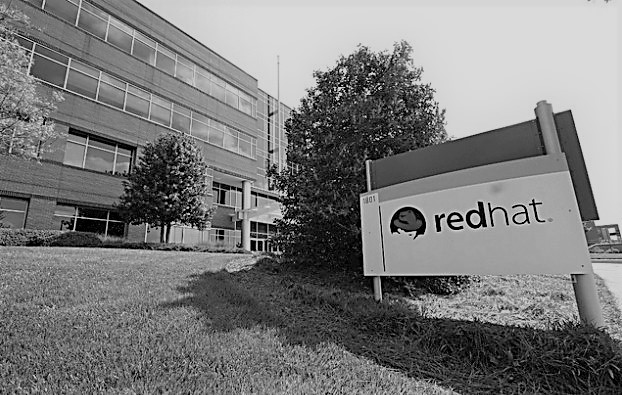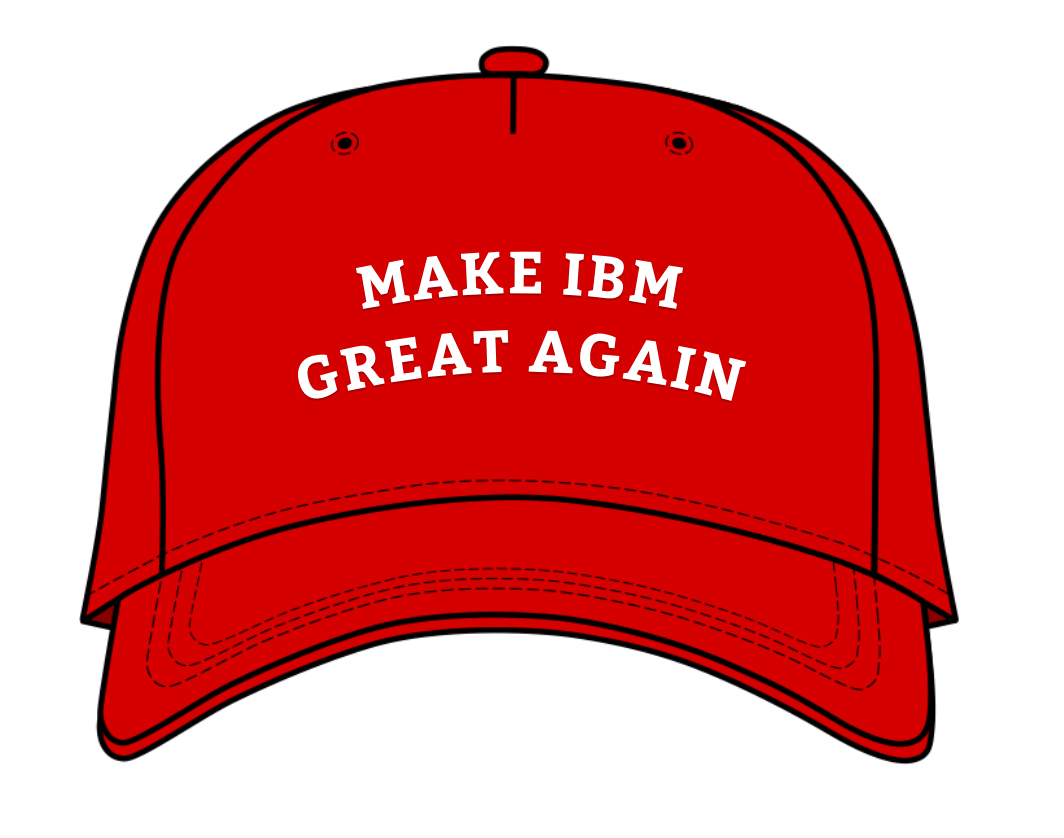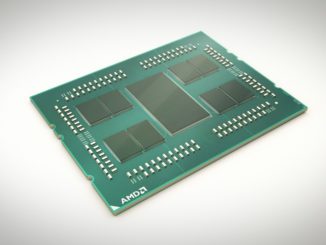
In one fell swoop that is going to cost Big Blue a whopping $34 billion, IBM is going to become a modern software powerhouse in the datacenter that has to be contended with in an entirely different way. We will be spending some time chewing on all of this, as the top brass at IBM and Red Hat no doubt have been doing for quite some time.
If Ginni Rometty, IBM’s president and chief executive officer since 2011 and its chairman of the board since 2012, was looking for a legacy before she retires – which by IBM tradition should happen soon – then the acquisition of open source software giant Red Hat is it. And with this deal, IBM’s two decades of financial engineering, where it has spent an incredible $175 billion on share buybacks, seems to be temporarily over. To help pay for the acquisition of Red Hat, IBM is immediately suspending share buybacks in 2020 and 2021, and the company said in a statement that it has enough cash, credit, and bridge lines to do the deal with a combination of cash and debt.
Red Hat is on track to close more than $3 billion of business in calendar 2018, which may not seem like a lot but this is by far the largest company that works on open source software and that makes a living selling support contracts for it. Had this been all done with proprietary software with traditional perpetual licenses and annual maintenance fees, Red Hat might be generating $15 billion in revenues a year. But the whole premise of open source is that the code is not proprietary and the value lies in the community that develops the freely available software and the only way to make a living is to sell support services. Red Hat, more than any other company, has wiped out untold tens of billions of dollars in revenue streams that IBM once depended by displacing its AIX Unix and proprietary IBM i and System z machines in so many large enterprises. Even companies that still use IBM platforms tend to have a much larger Linux and Windows footprint, and have had them for decades in many cases.
IBM did not buy Red Hat for that revenue stream, but for a chance to have a modern platform to counterbalance declining sales of the proprietary platforms that will still be with us for many years but which do not represent the future of computing at most datacenters. IBM is betting that it can use its worldwide reach to push the entire Red Hat stack, not just its Enterprise Linux, deeper into the datacenter and across a broader range of use cases, industries, and geographies. If IBM can do a factor of 5X increase, it will be back to where its AIX, IBM i, and System z platforms used to be in terms of revenue generated from software, and it will also, over the time it will take to grow Red Hat that much, get all of its bait back from the deal. If Red Hat just does a little better and grows revenue at 25 percent a year going forward, IBM gets its money back halfway through 2024; if it can boost that to 30 percent, then it will get the money back by the end of 2023. Red Hat’s revenue growth has been bouncing up and down around 20 percent each quarter for the trailing twelve months.
This is a pretty good bet, and one that IBM should have made a long time ago. But as a wise man once said about investing: “The best time to do anything was ten years ago. The second best time is right now.” (Thanks for that wisdom, Harry Cornell, former chief financial officer at Cheesebrough-Ponds.)
At the market close on Friday, Red Hat had a market capitalization of $20.53 billion at just under $117 per share, and IBM is offering $190 a share to buy the company outright, representing 62.8 percent premium over the close. Very few companies will be able to come up with that much cash, and even though the deal is not expected to close until sometime in the second half of 2019 – a long way away – it seems unlikely that someone is going to swoop in and offer Red Hat a better deal. Red Hat has $1.76 billion in the bank, which shaves a little bit off that premium. IBM, by contrast, will probably bring in somewhere around $77 billion in sales in 2018 and had a mere $14.5 billion; its market capitalization as of Friday’s close was $113.9 billion. What this means is that Wall Street values a dollar that Red Hat generates 4.6X more than one that Big Blue generates.

The Red Hat deal is by far and away the largest acquisition that IBM has ever done. Like by an order of magnitude or more.
One of the first things that then-new CEO Louis Gerstner, who took the helm on April Fool’s Day in 1993, was get the company settled down and focused on software and services.
In 1995, IBM paid $3.5 billion for buy Lotus Development Corporation, the maker of the famous Lotus 1-2-3 spreadsheet that transformed business the world over as well as the Domino application platform that had many of the right ideas about how to create a platform but which never caught on in the way that IBM expected. To boost its database presence in the Unix market, IBM bought the database products from Informix Software for $1 billion in 2001; it bought the other half of the company, known as Ascential Software, in 2005 for $1.1 billion. As Gerstner was making his exit to retirement, IBM spent $3.5 billion to buy Pricewaterhouse Consulting, a deal that Rometty spearheaded herself and which added a new layer of services to the kinds of systems integration and outsourcing that IBM Global Services had been doing. In the following year, IBM spent $2.1 billion to buy Rational Development Corp, a maker of application development tools and frameworks, and in 2008 it spent $5 billion to buy Cognos for its data analytics software, following up the next year with a $1.2 billion deal to acquire SPSS for its predictive analytics applications. (The combination of relational databases and the Cognos and SPSS tools are what IBM means when it says “cognitive solutions.” It most definitely is not seeing much of a revenue stream from its Watson services.) Finally, IBM spent $2.2 billion in 2013 to acquire SoftLayer, jumpstarting its public cloud efforts and laying the foundation for the current IBM Cloud.
“The acquisition of Red Hat is a game-changer. It changes everything about the cloud market,” Rometty said in the statement that the two companies put out announcing the deal, which will be gone over in more detail during several presentations on Monday. “Most companies today are only 20 percent along their cloud journey, renting compute power to cut costs. The next 80 percent is about unlocking real business value and driving growth. This is the next chapter of the cloud. It requires shifting business applications to hybrid cloud, extracting more data and optimizing every part of the business, from supply chains to sales.”
Not to quibble too much, but the IBM deal to buy Red Hat doesn’t change the cloud market – and by this we presume Rometty meant the mix of on-premises private cloud infrastructure that companies buy as well as the supplemental public cloud capacity they also buy – one bit. What it does change, however, is IBM’s ability to more fully engage as applications move from being monolithic (even on modern Linux iron) to vast collections of interconnected, containerized, distributed, continuously tweaked microservices running within Docker containers and orchestrated by the Kubernetes container controller. The enterprises that make up the cloud market have already made up their minds that they will keep some infrastructure on site and that they also want to be able to deploy to multiple public clouds without vendor lock in. Big Blue’s IBM Cloud Private as well as the platform services on the IBM Cloud attest to this. All of this could have been done through a partnership with Red Hat – which IBM has had since Red Hat went public in 1999 – but then most of the money would have passed back through to Red Hat. IBM wants the money and the glory.
To be fair, IBM has been active in the open source community, starting with Linux and expanding outwards, for more that two decades and it has done its share.
When the deal closes next year, Red Hat will be absorbed into IBM’s Hybrid Cloud division and will remain “a distinct unit,” giving Red Hat the arm’s length from Big Blue that it will need to preserve its relationships with every server maker and every public cloud that competes with IBM’s own alternatives. Red Hat’s facilities will remain the same and Jim Whitehurst, who has been running Red Hat for the past decade, will join IBM’s senior management team and report directly to Rometty.
There is a lot to discuss here, so we will listen to what IBM and Red Hat have to say and let you know what we think.





IBM can offer a very strong package to corporations today, including its Power9 systems, Red Hat Software and various services. In the near future computers will be radically re-architected to give much higher performance. This will require major changes to Red Hat software. The new software will be open source but will only run on IBM’s new hardware. It will be so good that Amazon, Google, Microsoft, Apple, Facebook etc will all buy it from IBM,
If some company makes a better offer for Redhat, does Redhat still have to pay the million dollar fee for changing from the IBM deal? A million sounds like a lot to most; but if they get a billion more, the million penalty sounds like small potatoes.
I believe so, that’s how it works. But Red Hat shareholders have approved the deal and no second deal has emerged as yet. It looks like it is up to the regulators now.